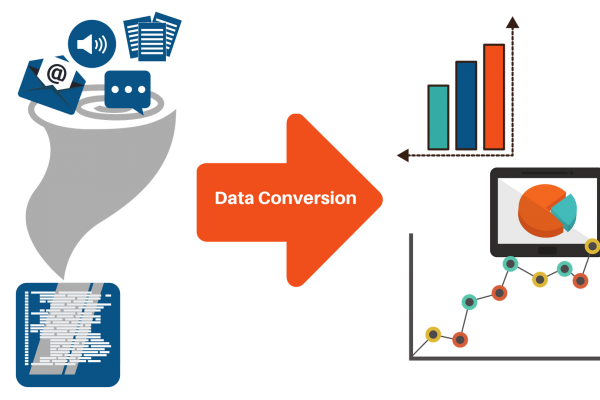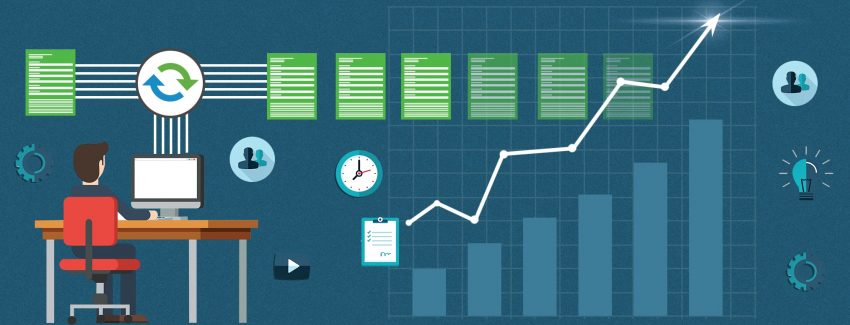Large-scale technology conversion and modernization efforts go hand-in-hand in accordance with changes in business thinking and developments on the information and technology front. One major consequence of this is that information systems regularly undergo changes including mergers, migration, and installation of new databases, accompanied by changes in the data comprising that database. This is particularly common in the healthcare sector where organizations tend to transition between different electronic medical record management systems that help them perform their patient information management in a better way. Efficient data conversion is vital to ensure that the quality and viability of the data is retained and that it does not suffer from the frequent changes of information systems.
-
The Importance of Data Conversion:
Data conversion is a critical process in the migration of information from existing information databases to new ones that often requires changes in data formats. Data conversion refers to the transformation and transfer of data between different systems when the systems undergo replacement or updates as well as the change in the format of data to ensure that it is compatible with the new database. There are different kinds of data conversion processes that can be useful for businesses including document conversion, e-book conversion and pdf conversion among others.
Data conversion is very closely associated with system conversion and till date, this aspect has not received the attention it deserves, when planning for such a system change. So far, it has been relegated to the position of a minor task of the major legacy change. Hence, data conversion deserves a special standing of its own- as a separate strategic initiative as part of the whole data management process. Especially in the healthcare sector, the quality of historical data conversion plays a crucial role in determining the quality and availability of patient data accumulated over time. Data conversion is also of great importance for the insurance sector. Companies can make use of different data conversion and document strategies that help ensure that their data is compatible with their systems.
Correct data conversion should ensure the following:
-
- Data is converted into an appropriate format that fits the destination database
- Data is transferred correctly
- Data works in the new destination database
- Data retains its quality
- Data consistency is maintained at all times across all systems using that particular data
The present day challenges to ensuring a smooth and successful data conversion include the following:
-
- Challenges of migration of data from legacy systems and replacements to new systems as well as system consolidations: this process is associated with high failure because of the size, breadth, and complexity of the projects.
- Complexity of data: the merging of structured and unstructured data creates new difficulties. This renders it more difficult to convert such data into a particular format.
- Project timelines: this creates challenges in completing the task.
- Effect on the quality and accessibility of the data: challenges persist in ensuring that the quality and accessibility remains unchanged following the conversion.
-
10 Key Strategies of Successful Data Conversion:
The complexity of data conversion requires that certain strategies be put in place. Here are some essential strategies that you must apply in order to ensure the success of your data conversion projects.

-
Proper Planning:
Successful data conversion requires proper planning. Any data conversion project needs to start with defining the boundaries of the project. You can plan your project by asking a variety of questions to define these boundaries. These include:
-
- What kind of data needs to be converted?
- What is the quality of data and its availability? Does it require full or partial conversion?
- Which data should be moved to the new database?
- Which data should not be moved?
- What kinds of formats are needed for data conversion? For example, your project may require SGML, XML, HTML, and other formats. An efficient SGML conversion outsourcing provider may execute this task and deliver the product quickly. You can then use this data for your SGML-compatible databases.
- What is the original data format and what is the final format?
- What would be the extent of digitization?
- Is the destination database compatible with the software used for data and HTML conversion?
- What are the data conversion standards to be used, if any, for the successful completion of data conversion projects?
- What are the guidelines for the process?
- What would be the tentative duration of project?
- How frequently would do you need to carry out the data conversion?
- The cost of data conversion is one of the limiting factors for a data conversion project.
The more detailed your planning, the easier it would be for you to control the project.
-
Ensure Business Engagement:
Sometimes, those in the business side of the organization do not understand the importance of data conversion. It is important to make them understand the importance of data conversion in data processing and management: about how the quality of data conversion can affect subsequent processes that makes use of this data. Data conversion is thus, a task critical from both business and technical perspectives.
-
Implement Data Standards:
Defining and implementing data quality standards helps to ensure consistency across the different databases. Consistently measure and track data quality and constantly check the effect on the business value. (hyperlink to article on data quality impact on business value).
-
Data Profiling and Cleansing:
Ensure that proper data profiling and data cleansing procedures are in place so that the original data is of high quality. This helps to smoothen out the subsequent data conversion procedures.
-
Data Management and Data Governance:
Following data conversion, ensure that the duplicate master data is eliminated, reducing the risk of incorrect transactions and unreliable reports. The project should satisfy all principles of data management and data governance.
-
Evaluating data complexity
Complexities of data strings and current data classification systems can largely influence the direction in which an organization moves forward with the tools migration and the integration processes. Data evaluation involves analyzing what kind of resources the organization possesses, the type of storage where these data resources are stored, and how complex is the data that is stored.Though data is an integral part of a business process, the problem with it is that it becomes voluminous. As organizations continue using different modes of tools and technologies, the need to filter out valued information grows high. Establishing a comprehensive set of rules and standards will help you determine which data to migrate and which to not.
7.Defining business rules
- It is also important to define the business rules that will define how you use data. These rules will ensure to maintain compliance and compatibility with business and validation rules as well as with future policies and regulations.
8.Information governance structure
- An information governance structure figures out who will be responsible for managing the information, data quality, access, and appointing someone who will have a final say on data usage throughout an organization. Since an entire organization is affected by data migration, it is important to be careful when deciding upon an information governance structure.
9.Assessing data quality
- Data quality assessment eradicates duplicate contents that are irrelevant to current and future business processes. The assessment ensures high-level quality information is being transferred from the source point to the target point so that it is accessible to both current and future users.
10.Arranging migration requirements
- Once data complexity has been evaluated, business rules defined, information standards established, information governance structure detailed out, and data quality assessed; you are required to gather the migration requirements. Make sure to carefully analyze how, who, where will the data be put to use. In addition, you will also need to estimate the impact that the data will leave in the future.
11.Risk management
- Risk management should be an integral part of the data migration process. Make sure that all data is accessible for any potential audits. In addition, ensure that all information systems comply with industrial, government, and companywide regulations.
12.Change management
- Change Management is another important part of data migration. Any change in the organizational setting requires careful consideration of the customers, vendors, partners, and everyone who will be participating in the new system. Change management ensures everyone involved in the system is kept on board.
13.Aligning your IT and business partnership
- Getting all your teams on the same page will help you to a clear plan, thereby eliminating any sort of disconnect between the IT and business expectations.This is important since the IT needs to be aware of the strategic goals that a project migration needs to meet. Also, business leaders need to be aware and tactical of the operational challenges that are associated with a project. Getting all of them on the same page will help to align both the goals and the challenges thereby helping to create a better migration strategy.
Finally — finding the right vendor for your organization
There are a few practices that organizations must follow to implement data migration successfully.
However, one needs to consider choosing a vendor who will help to align with an organization’s vision and culture and provide a solution to address project requirements and unique infrastructure. In short, choose a vendor that will help you to follow the fundamental practices and help uncover business value, decrease organizational risk, and overall usability of data.
While most of the systems or software tools face the difficulty of data-to-data communication, Kovair Data Lake offers an SQL server database that is capable of transferring data irrespective of the type of tool they reside in. A new release is planned that will utilize MongoDB as well for additional flexibility. It is presumed that you are already acquainted with Kovair Omnibus enterprise service bus—the centralized platform that can implement an effective communication between diversified ALM tools. These tools, when integrated with Kovair Omnibus, allow the data to be pulled through the Omnibus data store using Omnibus extractors.
Establishing information standards
An experienced document conversion outsourcing provider would assist you with professional consultation on managing your projects efficiently, before the start. Following these best practices would ensure the best outcome of these projects.

